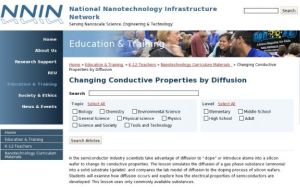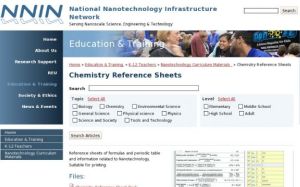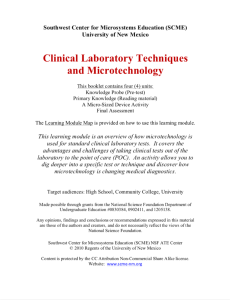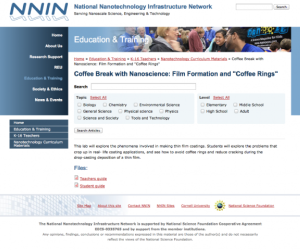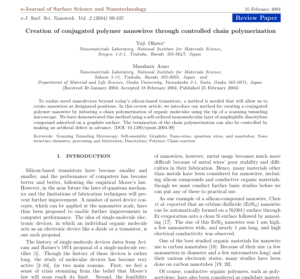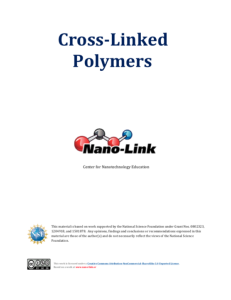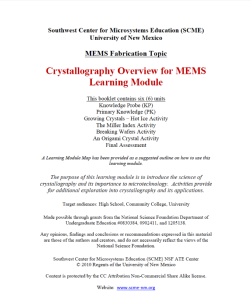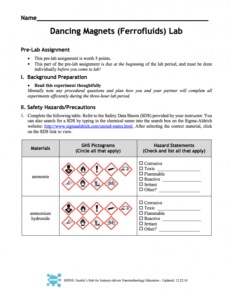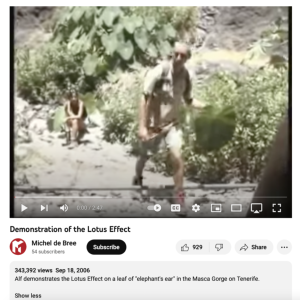Browse Resources
Resources | |
|---|---|
This lab, presented by the National Nanotechnology Infrastructure Network, covers the concept of semiconductor manufacturing. Students will learn how scientist "take advantage of diffusion to 'dope' or introduce atoms into a silicon wafer to change its conductive properties." The lesson simulates...
This reference sheet, presented by the National Nanotechnology Infrastructure Network provides a valuable chemistry reference sheet for high school students. Definition of terms, diagrams, abbreviations, mathematical notations, the periodic table, and other useful information is provided in an easy...
Module Description:
This module, from Support Center for Microsystems Education (SCME), provides participants with "an overview of how microtechnology is used for standard clinical laboratory tests". The module presents information for participants to learn about "the testing that takes place in a...
This lab, presented by the National Nanotechnology Infrastructure Network, will help students begin to understand nanotechnology, specifically behaviors of materials at the nanoscale. Students will "explore two factors affecting the thin film deposition, film cracking and the formation of 'coffee...
The Cornell NanoScale Science & Technology Facility (CNF) is a national facility that supports a broad range of nanoscale science and technology projects by providing state-of-the-art resources and staff support. The website includes sections on how to get started with CNF, links to their...
This paper, by Yuji Okawa and Masakazu Aono, covers the controlled polymerization of conjugated polymer nanowires. The authors introduce a "method for creating a conjugated polymer nanowire by initiating a chain polymerization of organic molecules using the tip of a scanning tunneling microscope."
Module Description:
This Cross-Linked Polymers module was created by the Center for Nanotechnology Education (Nano-Link). "This module allows students to investigate forces and interactions at the molecular scale by mixing different liquids with a cross-linked polymer." Science concepts covered in...
Module Description:
This module, from Support Center for Microsystems Education (SCME), introduces "the science of crystallography and its importance to microtechnology." This module is divided into the following six units: Knowledge Probe (KP), Primary Knowledge (PK), Growing Crystals - Hot Ice...
This Dancing Magnets - Ferrofluids Lab was created by SHINE: Seattle's Hub for Industry-driven Nanotechnology Education. "This lab consists of activities designed to teach students about ferrofluids and how nanotechnology can be used to modify the properties of magnetic materials." Lab resources...
This video demonstrates the lotus effect, which refers to the high water repellency of certain leaves, from a plant found in Tenerife. The lotus effect is demonstrated by pouring water and honey on a water-repellent leaf. Running time for the video is 2:48.
| |
| ← Previous | Next → |
